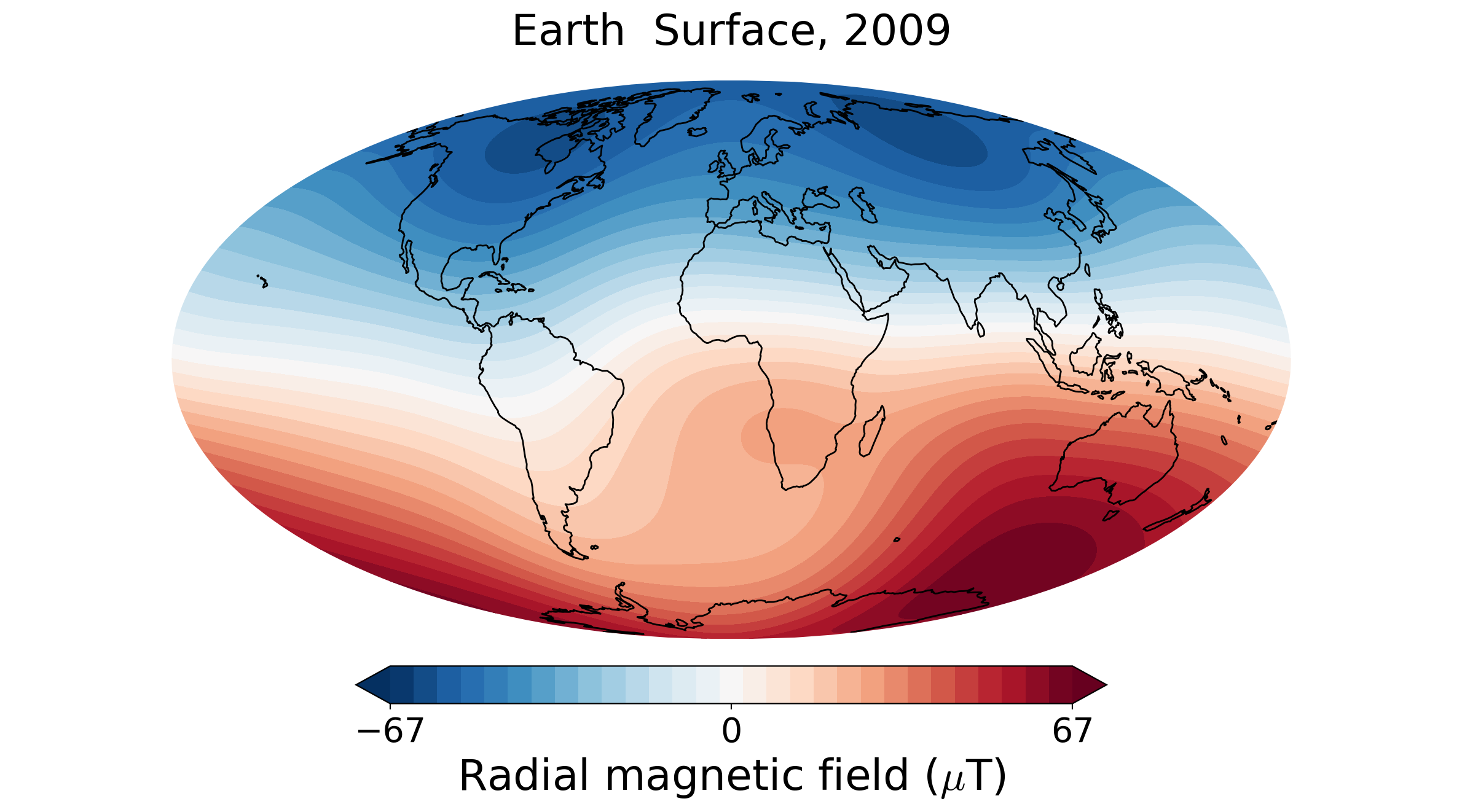5. Magnetic field models and units¶
We have support for different field models for planets. They are listed below:
Mercury :
Earth : IGRF 14, Alken et al. 2021
Jupiter :
Saturn :
Uranus :
Neptune :
Ganymede: Kivelson et al. 2002
A list of models and keywords for them can be obtained using the get_models function. For example:
In [1]: from planetmagfields import get_models
In [2]: get_models("jupiter")
Out[2]: array(['jrm09', 'jrm33', 'vip4'], dtype='<U5')
In case of Earth, a special argument year is also used to provide a year between 1900 to present day. This uses the IGRF14 model to compute a linear secular variation and extrapolate to the desired year. For example, the code below
In [1]: from planetmagfields import Planet
In [2]: p = Planet(name='earth',year=2009)
Planet: Earth
Model: igrf14
l_max = 13
Dipole tilt (degrees) = -10.500800
Year = 2009
In [3]: p.plot(r=1)
produces the surface magnetic field in the year 2009.

5.1. Units¶
In physical space, i.e., while plotting or extrapolating and obtaining the three components of the field \(B_r,B_\theta,B_\phi\), the default units are microTeslas. This can be changed while calling the planetmagfields.Planet class:
In [1]: from planetmagfields import Planet
In [2]: p = Planet(name='earth',year=2009,units='Gauss') #Will produce Br plots in Gauss
For spectral space, such as Gauss coefficients \(g_l^m\) and \(h_l^m\) (see section Mathematics) and Lowes spectrum (section Planet.spec()) are always in nanoTeslas (nT).